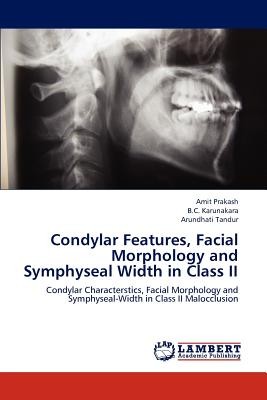
- We will send in 10–14 business days.
- Author: Amit Prakash
- Publisher: LAP Lambert Academic Publishing
- ISBN-10: 3659197025
- ISBN-13: 9783659197024
- Format: 15.2 x 22.9 x 0.6 cm, softcover
- Language: English
- SAVE -10% with code: EXTRA
Condylar Features, Facial Morphology and Symphyseal Width in Class II (e-book) (used book) | bookbook.eu
Reviews
Description
Condylar head inclination proved to be the most significantly correlated condylar characteristics to facial morphology. Hypodivergent pattern is dominant in Class II malocclusion. Symphysis width dimension also vary in different Class II malocclusion.SBL-PNS, Y -axis, Facial -Axis, PFH/AFH X100, Bjork sum and Symphseal width are significant parameters which discriminate between groups. Horizontal facial morphology was seen in 45 % of cases, vertical 8.3% and normal was 46.7%. Facial types of the Class II patients vary and it depends on the position of the condyle in the fossa. It can be anteriorly or posteriorly placed, depending upon the type of jaw bases. Glenoid fossa position also changes; it can be cranially or caudally placed in class II patients depending upon skeletal facial types. Symphysis width was strongly related to the direction of mandibular growth. Symphysis width varies in different types of facial types. Generally it is wider in low angle subjects and narrow in high angle Class II preadolescent patients.
EXTRA 10 % discount with code: EXTRA
The promotion ends in 20d.09:37:18
The discount code is valid when purchasing from 10 €. Discounts do not stack.
- Author: Amit Prakash
- Publisher: LAP Lambert Academic Publishing
- ISBN-10: 3659197025
- ISBN-13: 9783659197024
- Format: 15.2 x 22.9 x 0.6 cm, softcover
- Language: English English
Condylar head inclination proved to be the most significantly correlated condylar characteristics to facial morphology. Hypodivergent pattern is dominant in Class II malocclusion. Symphysis width dimension also vary in different Class II malocclusion.SBL-PNS, Y -axis, Facial -Axis, PFH/AFH X100, Bjork sum and Symphseal width are significant parameters which discriminate between groups. Horizontal facial morphology was seen in 45 % of cases, vertical 8.3% and normal was 46.7%. Facial types of the Class II patients vary and it depends on the position of the condyle in the fossa. It can be anteriorly or posteriorly placed, depending upon the type of jaw bases. Glenoid fossa position also changes; it can be cranially or caudally placed in class II patients depending upon skeletal facial types. Symphysis width was strongly related to the direction of mandibular growth. Symphysis width varies in different types of facial types. Generally it is wider in low angle subjects and narrow in high angle Class II preadolescent patients.


Reviews